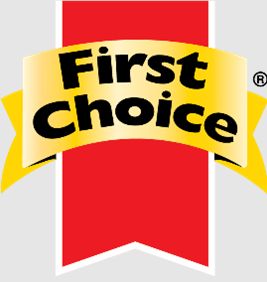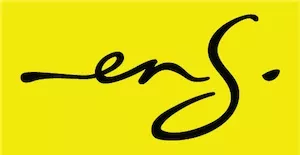- within Intellectual Property topic(s)
- in Africa
- within Intellectual Property topic(s)
- in Africa
- with readers working within the Media & Information, Pharmaceuticals & BioTech and Law Firm industries
- within Environment, International Law and Finance and Banking topic(s)
In this article, we discuss a recent, lengthy and somewhat unusual South African trade mark infringement/passing-off judgment, Woodlands Dairy Proprietary Limited v Sansom Farming CC, Tre Computers (Pty) Ltd and ZAN Central Registry NPC, Judge Dippenaar, Gauteng High Court,10 March.
The parties
The applicant in this case, Woodlands Dairy (Pty) Ltd (Woodlands), sells dairy products under the trade mark FIRST CHOICE & Logo

Woodlands has registrations in South Africa for this trade mark in classes 29, covering goods such as "dairy products and dairy substitutes; milk and milk products" and 32, covering goods such as "milk-based beverages and non-alcoholic drinks". The trade mark in class 32 dates back to 1995, whilst the trade mark in class 30 dates back to 2006. Woodlands also owns various other "FIRST CHOICE" incorporating trade marks in class 29 covering "various milk and dairy products". The trade mark registrations in classes 29 and 32 are subject to a disclaimer of the term 'first choice', which means that no business can claim exclusive rights to this term.
The respondent, Sansom Farming CC, operates a dairy business in the Eastern Cape, and it uses the brand name FRESH CHOICE.


*Image credit as per Trade Marks register
It applied for the FRESH CHOICE stylised trade mark in class 29 covering goods including "milk and milk products" in 2017. The trade mark proceeded to registration in 2020. The words 'fresh' and 'choice' are disclaimed in the trade mark registration. Based on the information available on the Companies and Intellectual Property Commission (CIPC) Trade Marks Register, the application for the FRESH CHOICE stylised trade mark was provisionally refused in 2018 by the Registrar of Trade Marks. It is not clear why the trade mark application was provisionally refused, but the application was subsequently accepted and advertised in 2019. There is also no indication that the application was opposed during the three-month opposition period, and the trade mark proceeded to registration in.
Court proceedings
Woodlands filed a High Court application seeking cancellation of the FRESH CHOICE logo in class 29 in the name of Sansom under various sections of the Trade Marks Act:
- 24(1) – an entry wrongly made;
- 10(7) – a mark filed in bad faith;
- 10(12) – an inherently deceptive mark;
- 10(14) – a mark that is identical to a registered mark;
- 10(17) – a mark that is identical to a well-known mark.
The judgment - some general principles
In a long judgment, Judge Dippenaar discussed a number of established legal principles. Here goes:
- The notional consumer must always be considered.
- A likelihood of confusion - this issue must be approached globally.
- Considerable confusion - there must be a probability that a substantial number of people will be confused.
- Trade mark disclaimers - a disclaimer is 'theoretically never necessary, since registration of a trade mark cannot give rights except those arising from a trade mark as a whole'.
- Common to the trade - Where disclaimed features are common to the trade, 'full effect should be given to the disclaimer'.
- First syllables and mouth shapes - The 'sound made for the first part of the syllable 'Fi' in FIRST is distinct from the sound 'Fre' in the first syllable of FRESH... the shape of the mouth is also different... it is well established that the first syllable of a word is generally the most important in considering the likelihood of confusion.'
- Meanings - On a 'grammatical level, the words FRESH and FIRST have different meanings'.
- Laudatory epithets - The words FIRST and FRESH are 'no more than laudatory epithets of a descriptive nature... they contribute nothing to identifying the source of the goods which it prompted... no amount of use of a purely descriptive term can make it distinctive'.
The High Court's findings
Judge Dippenaar had things to say on a number of issues:
The differences and similarities between the trade marks: Even if the disclaimed features are considered, 'the differences between the marks far outweigh their similarities'.
The perspective of the average consumer: If you consider the two trade marks through the eyes of the average consumer of dairy products, 'there is no likelihood that a substantial portion of those consumers are likely to be confused or deceived into believing that the respondent's products emanate from the applicant.'
Passing off: There was no 'likelihood of the respondent's goods being passed off as those of the applicant'.
Imitation: There was nothing in the evidence to suggest that the respondent had:
- 'imitated the applicant's mark closely';
- 'acted out of a common charade';
- been 'sailing as close to the wind';
- without 'brewing up a storm of confusion'.
Was it Nautical Metaphor Day or something?
Not a single coat-tail has been mounted: The judge was 'not persuaded that the applicant has established that the respondent has attempted to ride on the coat-tails of the applicant's reputation and goodwill'.
The mystery of conception: Although there was no explanation as to how the respondent had conceived its trade mark, 'the onus remained on the applicant to establish the requirements for relief.'
The passing off threshold: The applicant had failed to establish 'the requirements of passing off and is not entitled to interdictory relief on this basis'.
Unfair advantage: Based on these factors it 'can thus not be concluded that the applicant has established that the respondent's mark would be likely to take unfair advantage of or be detrimental to the distinctive character of the applicant's mark'.
Questions raised
When did Woodlands first become aware of Sansom's use of the FRESH CHOICE stylised trade mark?
According to the judgment, Woodlands became aware of Sansom's use and registration of the FRESH CHOICE pursuant to the publication of an article in the Daily Dispatch Weekend newspaper in June 2022. It is not clear when the first cease and desist letter was sent to Sansom.
Why did Woodlands not formally oppose the FRESH CHOICE stylised trade mark application upon advertisement?
As mentioned above, based on the information available on the South African Trade Marks Register, it does not appear that any oppositions were lodged against the application for the FRESH CHOICE stylised trade mark. IP firms worldwide generally offer a gratuitous watch service in which clients are alerted to newly filed trade mark applications and advertised trade mark applications which are identical or similar to clients' existing trade marks. This service is extremely beneficial to clients as it assists in monitoring the marketplace and affords clients the opportunity to take action against third parties, where necessary.
Another thought was a trade mark availability search conducted prior to Sansom filing their trade mark application and commencing use of the FRESH CHOICE stylised trade mark? If a trade mark availability search was conducted, were the earlier FIRST CHOICE trade marks identified and if so, were these trade marks considered "risks "against Sansom's use and application of the FRESH CHOICE stylised trade mark?
Quite a bit to think about. As we said earlier, an unusual case. But an interesting one too!
The content of this article is intended to provide a general guide to the subject matter. Specialist advice should be sought about your specific circumstances.


